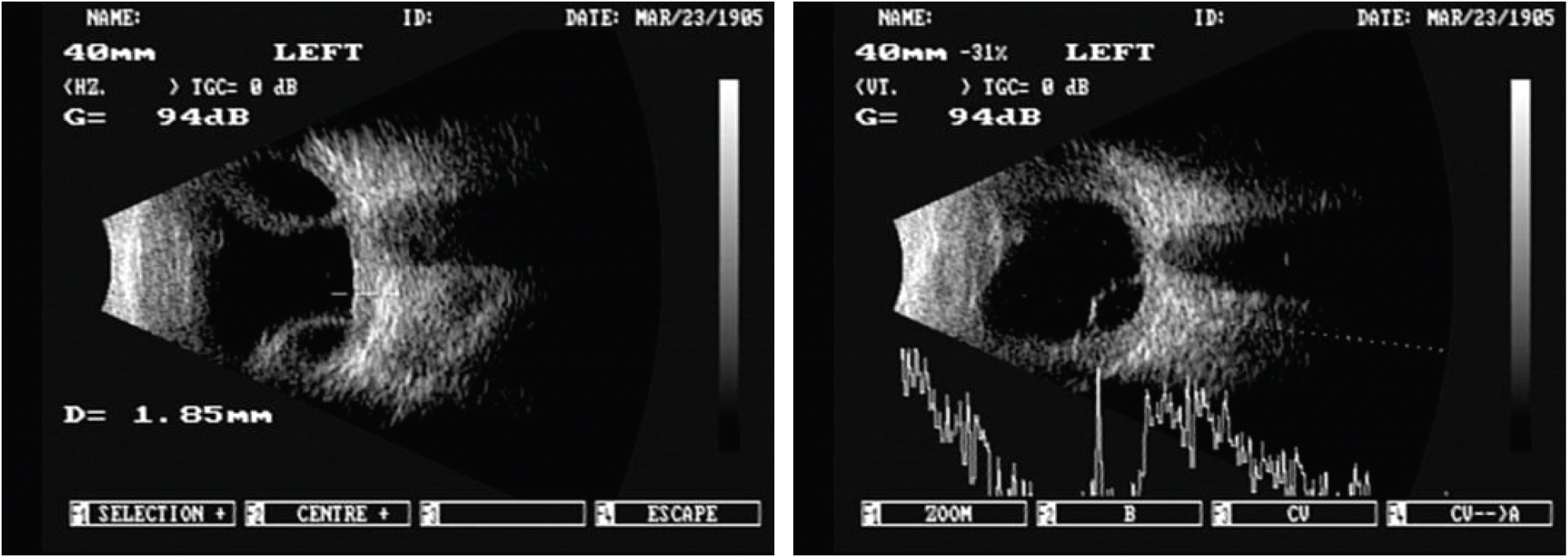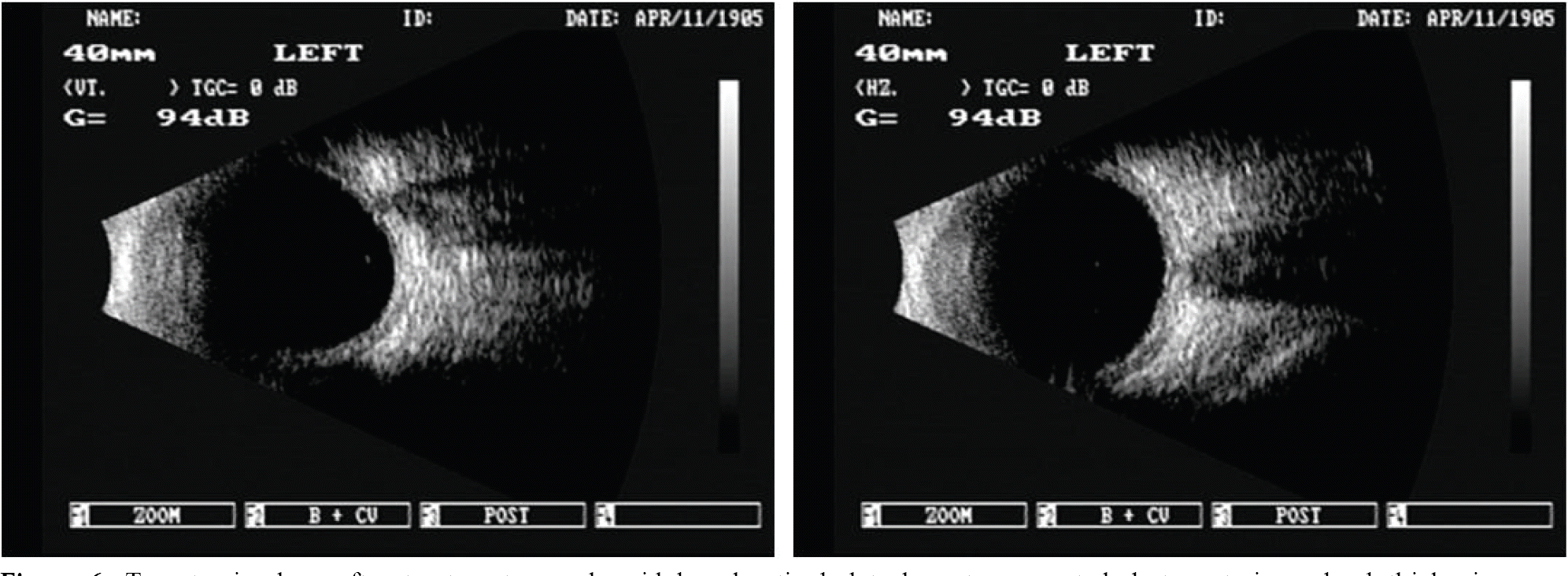Abstract
Purpose
To report a case of a patient with intractable scleritis with conventional immunosuppressive therapy who showed effective treatment with infliximab.
Case summary
A 71-year-old man presented with orbital cellulitis and diffuse anterior scleritis of his left eye. Although orbital cellulites showed remission with topical and systemic antibiotics, scleritis persisted despite a combination therapy of immunosuppressive agents (cyclosporin, mycophenolate, prednisolone) for 1 month. Finally, he was given infliximab (5 mg/kg) intravenously three times at 2-week intervals, after which ocular pain, chemosis, conjunctival injection, and sclera thickening considerably reduced, and scleritis completely remitted.
References
2. Murphy CC, Ayliffe WH, Booth A. . Tumor necrosis factor alpha blockade with infliximab for refractory uveitis and scleritis. Ophthalmology. 2004; 111:352–6.
3. Jabs DA, Mudun A, Dunn JP, Marsh MJ. Episcleritis and scleritis: clinical features and treatment results. Am J Ophthalmol. 2000; 130:469–76.

4. Jeoung JW, Yoon YM, Kim MK. The Effect of Amniotic Membrane Transplantation on the Treatment of Necrotizing Scleritis after Pterygium Excision. J Korean Ophthalmol Soc. 2004; 5:1981–4.
5. Koizumi K, Poulaki V, Doehman S. . Contribution of TNF-α to leukocyte adhesion, vascular leakage, and apoptotic cell death in endotoxin-induced uveitis in vivo. Invest Ophthalmol Vis Sci. 2003; 44:2184–91.

6. Bazzoni F, Beutler B. The tumor necrosis factor ligand and receptor families. N Engl J Med. 1996; 334:1717–24.

7. Feldmann M, Maini RN. Anti-TNF-a therapy of rheumatoid arthritis: what have we learned? Annu Rev Immunol. 2001; 19:163–96.
8. Sfikakis PP, Kollias G. TNF biology in experimental and clinical arthritis. Curr Opin Rheumatol. 2003; 15:380–6.
9. Shin JC, Im CY, Lee JH, Seo KY. Increased Tear TNF-alpha and MMP-9 in Patients with Necrotizing Scleritis after Pterygium Excision. J Korean Ophthalmol Soc. 2004; 5:720–4.
10. Sartani G, Silver PB, Rizzo L. . Anti-tumor necrosis factor alpha therapy suppresses the induction of experimental autoimmune uveoretinitis in mice by inhibiting antigen priming. Invest Ophthalmol Vis Sci. 1996; 37:2211–8.
11. Mo JS, Matsukawa A, Ohkawara S, Yoshinaga M.Involvement of TNF-α, IL-1β, and IL-1 receptor antagonist in LPS-induced rabbit uveitis. Exp Eye Res. 1998; 66:547–57.
13. Reiff A, Takei S, Sadeghi S. . Etanercept therapy in children with treatment-resistant uveitis. Arthritis Rheum. 2001; 44:1411–5.

14. Smith JR, Levinson RD, Holland GN. . Differential efficacy of tumor necrosis factor inhibition in the management of inflammatory eye disease and associated rheumatic disease. Arthritis Care Res. 2001; 45:252–7.

15. Sobrin L, Kim EC, Christen W. . Infliximab therapy for the treatment of refractory ocular inflammatory disease. Arch Ophthalmol. 2007; 125:895–900.

16. Galor A, Perez VL, Hammel JP, Lowder CY. Differential effectiveness of etanercept and infliximab in the treatment of ocular inflammation. Ophthalmology. 2006; 113:2317–23.

17. Murphy CC, Ayliffe WH, Booth A. . Tumor necrosis factor alpha blockade with infliximab for refractory uveitis and scleritis. Ophthalmology. 2004; 111:352–6.
Figure 3
. Seven days after treatment, diffuse scleral inflammation, conjunctival injection, nasal calcium plaque were noted.

Figure 4
. Seven days after treatment, choroidal and retinal detachment and scleral thickening were noted on ultrasonogram (B-scan).

Figure 5.
Twenty-six days after treatment, stationary scleral inflammation and slightly improved conjunctival injection were noted after conventional immunosuppressive therapy.





 PDF
PDF ePub
ePub Citation
Citation Print
Print






 XML Download
XML Download